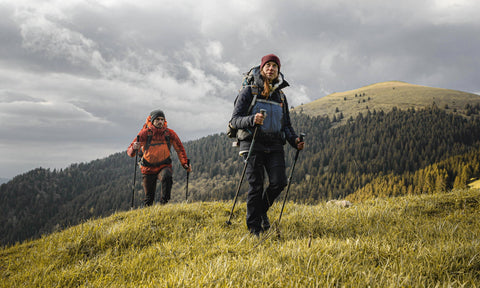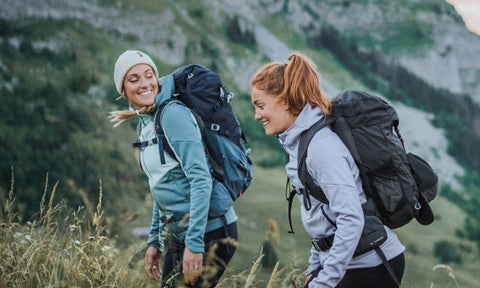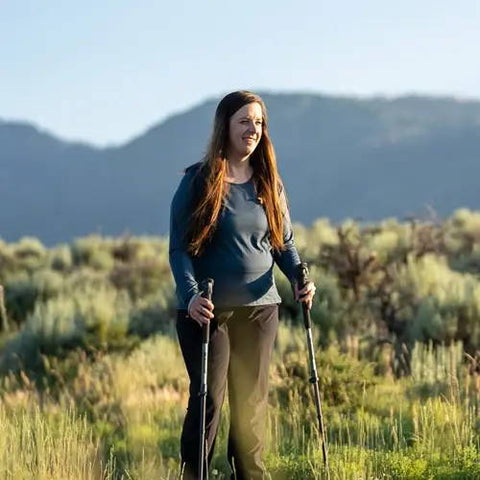When hiking, you switch between periods of sustained effort when going uphill and more relaxed periods when going downhill or stopping for lunch. How do you keep warm and dry in order to make the most of your day out?
Find out about the 3-layer technique!
LAYER 1: Breathable
Despite the importance of an effective first layer, it is all too often neglected. This is what keeps you dry by wicking perspiration away towards the other layers.
It is therefore preferable to choose a quick-drying fabric (made of so-called "hydrophobic" fibers).
LAYER 2: Insulation
In order to provide warmth, you need a second layer that insulates from the cold. This property is provided by pullovers and fleeces as well as down jackets.
LAYER 3: Protection
Finally, remember to take a third layer to protect you from the outdoor elements. This primarily refers to climatic elements such as the wind or rain. However, it can also provide protection from vegetation that can cause injury if you enjoy getting off the beaten path (abrasion caused by brambles, etc.)
Please note: thanks to technological advances, materials are becoming available which allow certain garments to fulfil several different functions: a modular jacket for example, which combines the functions of a second and third layer, or even a technical T-shirt which is both breathable and insulating. Consequently, the clothing used as a second layer in winter may be used as a first & second layer in summer… This allows you to mix and match your own outfit in order to find the best compromise keeping warm and saving space.
You will also need to get the right equipment for your legs and feet with a pair of zip-off trousers in summer and waterproof trousers in winter coupled with some warm and breathable socks. In the case of extreme cold or for those who are sensitive to cold, a pair of gloves or a hat will also come in very useful.
DID YOU KNOW? In order to keep your hands and feet warm, you should wear a hat. Indeed, the human body prioritizes the flow of blood to the brain. If the latter is nice and warm, it will consume less energy in keeping warm and therefore allow a good flow of blood to the rest of the body, including the fingers and toes.
You should now be properly equipped from your head to your toes. We hope you enjoy some excellent hiking outings!











